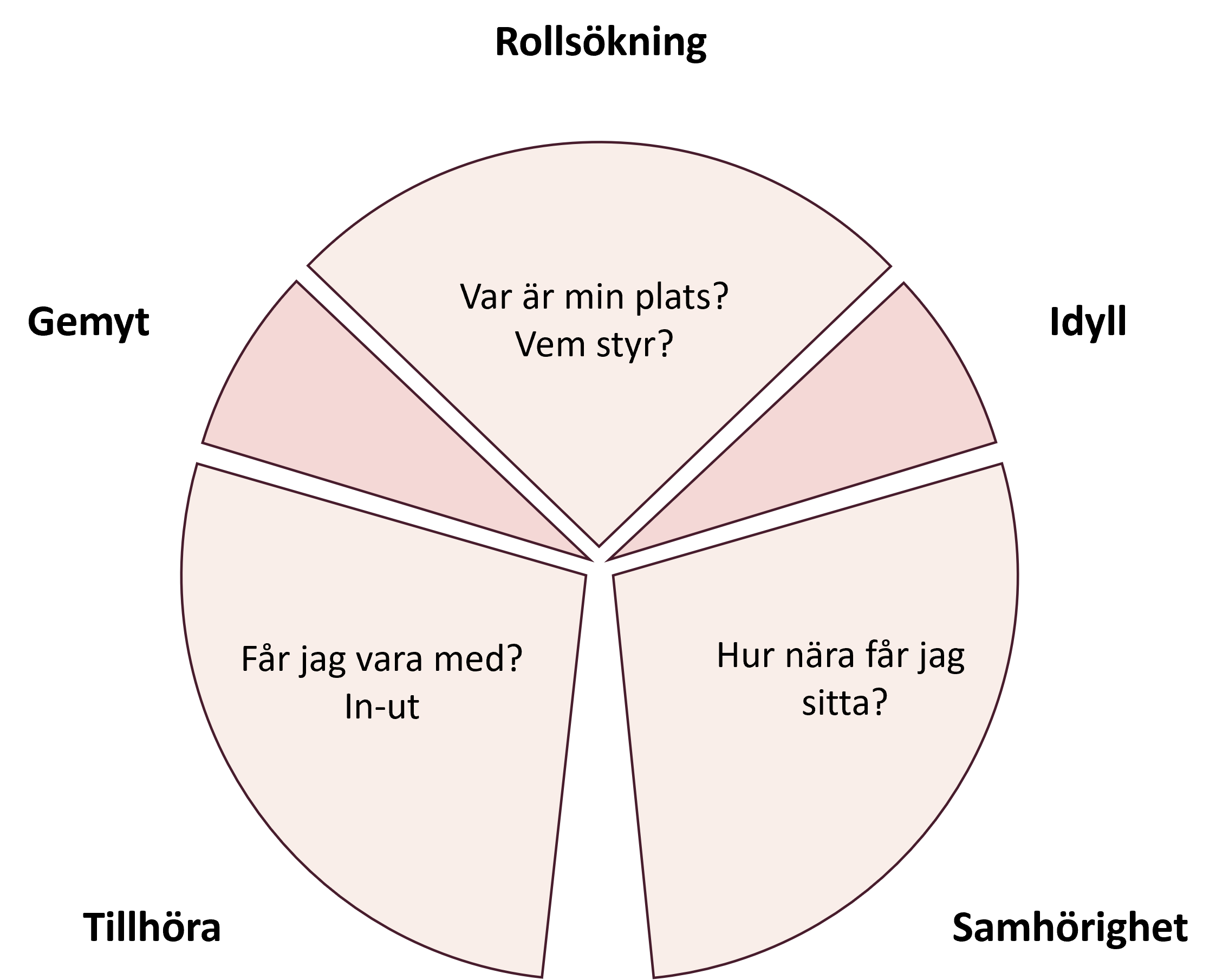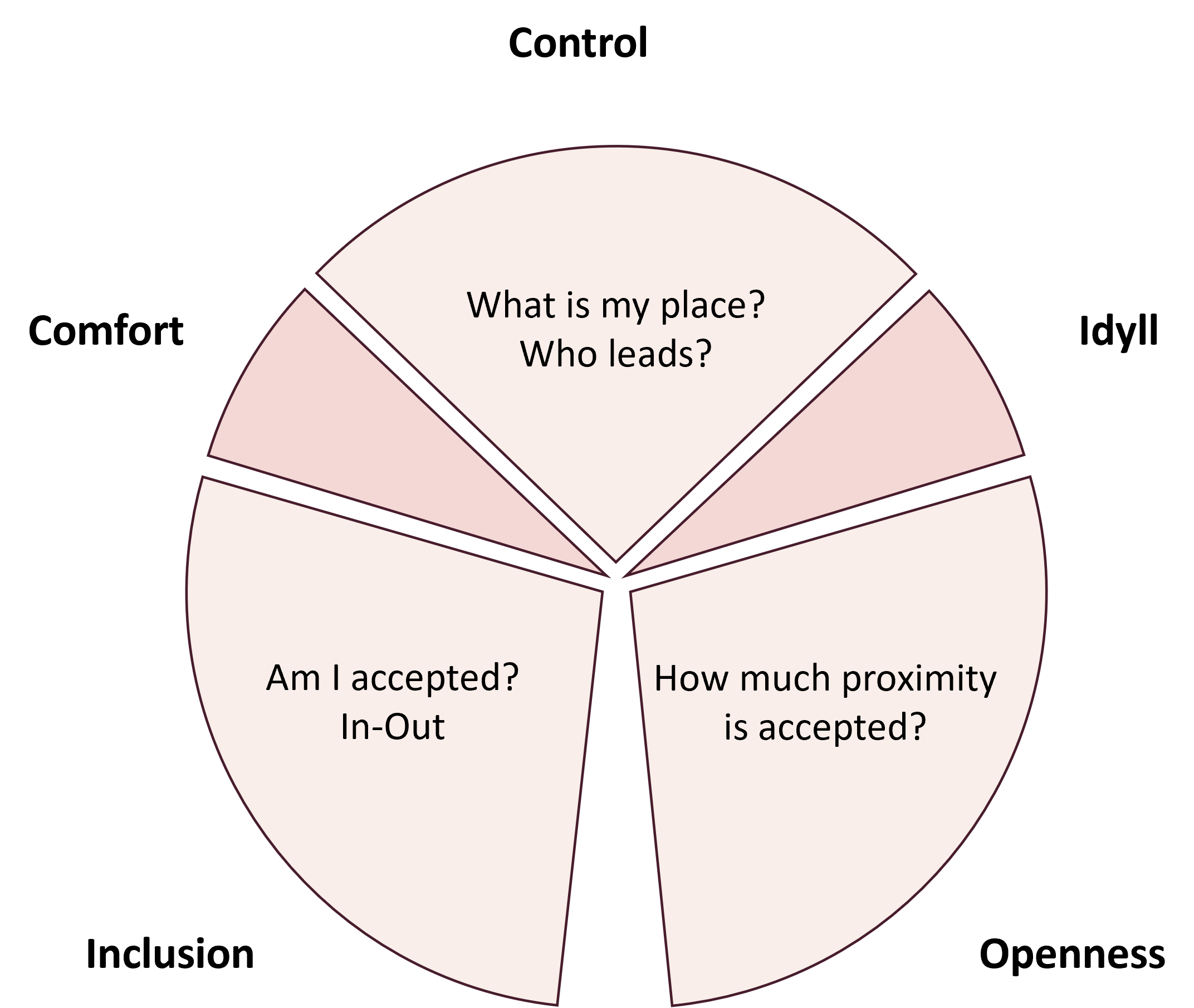3.2 - Grupprocesser och deltagarinflytande

Att deltagarna får inflytande är en av grundförutsättning
för att bedriva studiecirklar och annan folkbildningsverksamhet. Det är därför
viktigt att dynamiken i gruppen fungerar. Med grundläggande kunskap i
gruppdynamik (eller grupprocess), kan du enklare förstå hur deltagarna kan
engagera sig i studiecirkeln.
Eftersom gruppen består av individer som är unika är varje grupp unik. Det finns däremot generella mönster som går att känna igen.
Det finns många teorier om hur grupper fungerar och minst lika många forskare som har studerat vad som händer när människor kommer samman. Oavsett förklaringsmodell så kvarstår faktum att grupper genomgår faser som påverkar individerna i dem.
Här använder vi teorin FIRO (Fundamental Interpersonal Relations Orientation) som en grund och förklaringsmodell för vad som händer i grupper.
Detta är självklart inte något facit och verkligheten fungerar inte alltid som teorin säger. En grundteori kan vara till hjälp för att förstå mekanismerna som styr vårt beteende i grupper.

En grupp genomgår tre huvudfaser under sin utveckling mot enighet och effektivitet.
- tillhörighetsfasen
- rollsökningsfasen
- samhörighetsfasen.
Mellan dessa faser finns två övergångsfaser: gemyt och idyll.
Om en grupp får en ny medlem, eller om någon slutar, går gruppen tillbaka till första fasen.

Participant influence is one of the basic prerequisites for successful study circles and other folkbildning activities. It is therefore important that the group dynamics work for everyone. If you have a basic understanding of group dynamics (or group process), you can more easily understand how participants can become engaged in the study circle.
Because the group is made up of individuals, all of whom are unique, each group is unique. On the other hand, there are some general patterns that we can note here.
Many theories have been put forward to explain how groups work and at least as many researchers have studied what happens when people come together in groups. Regardless of the explanatory model, it is apparent that groups go through phases that have an impact on the individual members of the group.
Here, we use the Fundamental Interpersonal Relations Orientation (FIRO) theory as a basis and an explanatory model to describe what happens when people form groups.
Of course, this is not a definitive answer and reality does not always match what the theory describes. A basic theory can help you understand the mechanisms that control our behaviour in groups.

According to FIRO, a group goes through three main phases in its development towards unity and efficiency.
- Inclusion
- Control
- Openness.
Between these phases, there are two transitional phases: the comfortable phase and the idyll phase.
If a new member joins the group, or if a member leaves, the group goes back to the first phase.